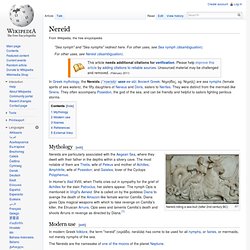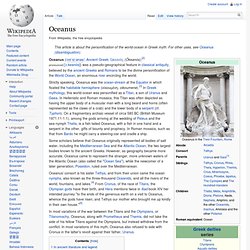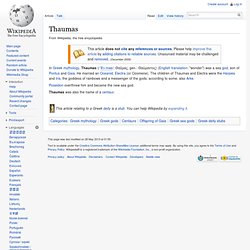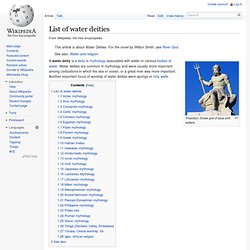

Nereid. Mythology[edit] Nereid riding a sea-bull (latter 2nd century BC) Modern use[edit] In modern Greek folklore, the term "nereid" (νεράϊδα, neráïda) has come to be used for all nymphs, or fairies, or mermaids, not merely nymphs of the sea.

Greek mythology, Elektra. Oceanus. Oceanus (/oʊˈsiːənəs/; Ancient Greek: Ὠκεανός (Ōkeanós);[2] pronounced [ɔːkeanós]) was a pseudo-geographical feature in classical antiquity, believed by the ancient Greeks and Romans to be the divine personification of the World Ocean, an enormous river encircling the world.

Some scholars believe that Oceanus originally represented all bodies of salt water, including the Mediterranean Sea and the Atlantic Ocean, the two largest bodies known to the ancient Greeks. However, as geography became more accurate, Oceanus came to represent the stranger, more unknown waters of the Atlantic Ocean (also called the "Ocean Sea"), while the newcomer of a later generation, Poseidon, ruled over the Mediterranean. In ancient literature and legend[edit] Thaumas. Poseidon overthrew him and became the new sea god.

Thaumas was also the name of a centaur. THAUMAS : God of the Wonders of the Sea. Water deity. Poseidon, Greek god of seas and waters.

A water deity is a deity in mythology associated with water or various bodies of water. Water deities are common in mythology and were usually more important among civilizations in which the sea or ocean, or a great river was more important. Kelaeno, Greek Goddess of Storms and One of the Harpiesn art cards.